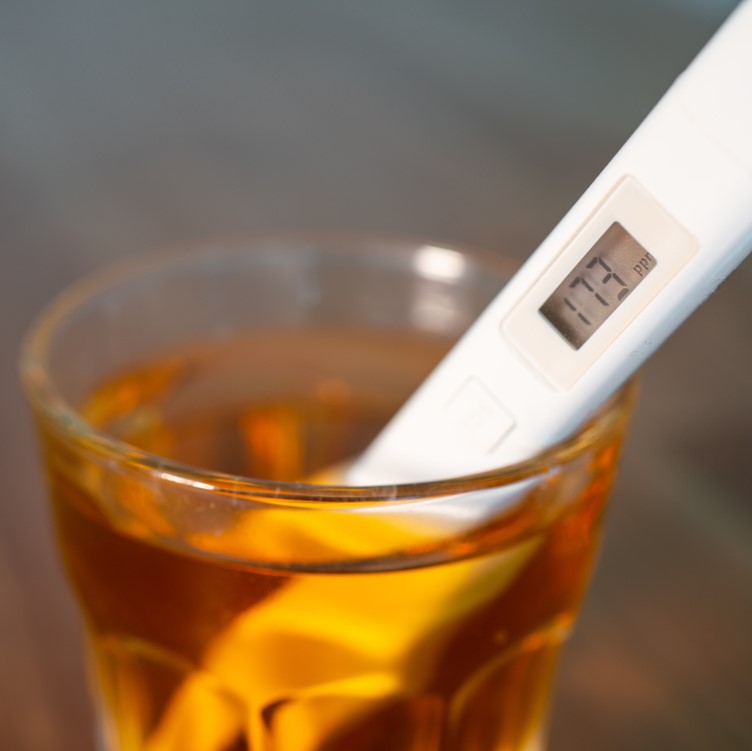5 Simple Steps to Find the Right Home Water Filter
Are you concerned about water quality? Unfortunately, water contamination is a widespread problem in Florida because of our unique geography and weather. You may be concerned about bacteria living in your water or a foul taste or odor from tannins. Or, you may be worried about lead or chemical contaminants. Whatever the reason, you can find a water treatment system to meet your needs. We have put together this step-by-step guide to help you choose the best home water filtration system.
 Step 1. Water Testing
Step 1. Water Testing
The first step is a water analysis to identify what is lurking in your tap water. This step is crucial. There are five different water treatment options: water filters, reverse osmosis systems, distillation systems, ultraviolet treatment, and water softeners. Each one has different strengths. A water analysis will help you identify the best type of water treatment for your home.
If you live in Lakeland, FL, or the surrounding region, you can contact Tri-Florida Water Treatment for a free in-home water analysis.
Step 2. Well Water or City Water?
Do you have well water or city water? Answering this question is the second step in determining what type of home water filter to invest in.
The Environmental Protection Agency (EPA) regulates the quality of city water. This is why public water in the U.S. is safer than in many other nations around the world. It is typically free of sediment, grit, bacteria, and viruses. Unfortunately, due to the advanced age of our public water supply systems, boil water alerts caused by ruptured pipes or contamination have become more common. Also, many regions have a lead problem because of old pipes that have corroded. If you have city water, the best filter for your home will typically be one that can remove hard metals, like lead and harmful chemical contaminants.
The EPA does not regulate private wells. If you have well water, you are more likely to have sediment, grit, tannins, and iron issues. Around 40% of private wells also contain harmful bacteria like E. coli. If you have well water, the best water treatment system for your home may be a compound filter. These systems typically have one filter that catches dirt, grit, heavy metals, and chemical contaminants and a second filter that captures or kills bacteria and viruses.
Step 3. Whole House or Under Sink Water Filter?
Once you’ve narrowed down the best type of water treatment, you need to decide how big of an investment you want to make. That’s why the second step is to consider if you want a whole house water filtration system or an under the sink drinking water filter.
A whole-home water filtration system is also known as a point of entry (POE) water filter. This is because it is installed at the point where city water or well water connects to your home’s water pipes. It is designed to treat all of the water that runs throughout your home.
An under-the-sink drinking water treatment system is a point of use (POU) water filter. As the name implies, it is installed under a sink in your kitchen or bathroom. It only treats the water running through that faucet. A POU water filter is best for minor water quality issues like correcting an unpleasant taste and removing chlorine.
Step 4. Average Water Usage?
Determining what size of filter you need is the next step. To find the answer, you need to determine how much water your household uses daily.
There are two ways to calculate your average daily water usage. The first option is this online calculator. The second option is to calculate it based on your latest water bill. If you choose to use your last water utility bill, multiple the number under Usage with 748 gallons. Then divide that result by the number of days in the billing cycle and the number of people in your household. The result will be the number of gallons used per person per day in your home.
 Step 5. Maximum Water Flow Rate?
Step 5. Maximum Water Flow Rate?
What is your home’s maximum water flow rate? This is the last question you need to answer to determine the capacity of your water treatment system. Whether your home has a high, average, or low water flow rate can impact your water treatment system.
You can calculate your home’s water flow rate using a measuring cup:
- Place it under a faucet and turn the tap on full blast for 10 seconds.
- Convert that measurement to gallons.
- Multiply the amount by 6.
The result is your home’s flow rate by gallons per minute (GPM). The average flow rate for faucets in the U.S. is 2-3 GPM.
Once you have taken these five steps, you have the information you need to choose a water treatment system for your home. However, if you still have questions, reach out to a water treatment specialist like Tri-Florida Water Treatment! We will work with you to help you find the best water filter for your home.
Get this process started by scheduling a free in-home water analysis today!
